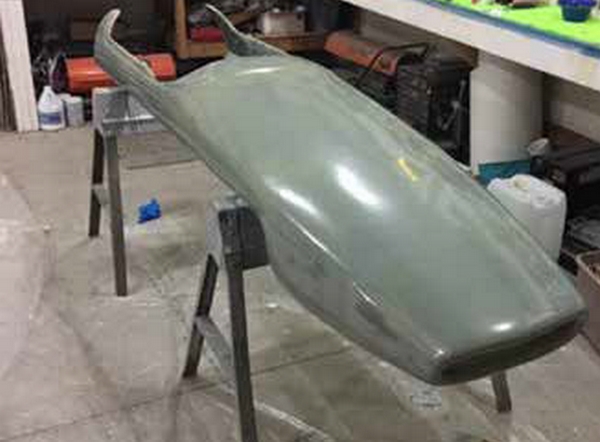
The last step after the bodywork is the polyester primer. Spray or brush one layer of mold-release wax onto the surface of the automotive.

Fiberglass tape around the outer edge of the cockpit fairingcar body seam.
How to make a fiberglass car body. Redlines first tutorial shows step by step all the details techniques beginners need to know. After all this was a time when sports car excitement was growing daily automobile enthusiast magazines were sprouting up everywhere and the new wonder material fiberglass was going to make the dream of owning a custom sports car a reality for every young man in America. How to Make Automotive Fiberglass Body Molds Step 1.
Put on your goggles and gloves. Spray or brush one layer of mold-release wax onto the surface of the automotive. Apply the next layer of mold-release wax in an alternating direction from the first layer.
How to Use Fiberglass to Make a Body Kit Step 1. Without getting your layout on paper first your body kit is almost guaranteed to look. After removing the existing bumpers and trim on your car cut lengths of high-density foam into the approximate.
Unless you happen to be a talented sculptor you need a T-Bucket body to serve as the plug from which you will build. When you make that mold you will have to use two to four times the thickness of fiberglass as will be used in the body. Once you build the mold then you need to lay in the.
Build a Fiberglass Body at Home In the Beginning Milk Crates Wood Planks Spit Wads Mixing the Plaster Concoction Plaster Final Coat Shaping Fiberglassing Mold Release Breaking the Fiberglass Body from the Mold Body Fit Mounts Gluing the Steel Mounts to the Fiberglass Body Making. Redline Tutorial No12 - 3rd music re-mix Music. Labor comes highabout 400 an hour including overheadand a lot of man-hours go into the making of a car.
The best alternative in my opinion is to make the body of Fiberglas that super-durable plastic that can be molded in one piece. Layer your fiberglass on your first form. Apply a layer of glass with resin and let dry and then apply another layer.
Repeat until you are satisfied. Release the fiberglass from the forms by popping off one end and then pulling the fiberglass body part up and away from the form itself. One-Off Construction Using Fiberglass Over Foam A Low-Cost and Forgiving Material.
A typical automobile body will require about 900 worth of plywood urethane foam. Begin by Attaching Plywood Station Formers. A body project begins with the chassis supported at ride-height.
Check out my latest project. HttpsyoutubeyXQnydST9fwCheck out the complete build video for the 3 kW Reaper turbine. Sanding the repair smooth and then using a body filler and high-build primer to finish it.
One extra step should be taken which is to use a sprayable polyester primer. This seals the fiberglass much like a gel coat for a factory-perfect finish. The last step after the bodywork is the polyester primer.
Cover the shaped styrofoam in adhesive resin applied with a paint brush and cover the shape with fiberglass cloth. Press the fiberglass cloth into the styrofoam with a hard roller. Allow the piece to dry for 12 hours.
Repeat the process until four layers of fiberglass cloth have been applied to the foam sculpture. A small electric motor that only allows the car to reach a top speed of 25 mph. No one ever said this was a supercar.
It only looks like one. So how much did the entire thing cost. 30000 yuan or.
Create your own panels with sheet metal fiberglass or whatever other material you choose and mount them to the frame of the vehicle as you finish. Weld everything in place and grind all of the rough spots off the body. Sandblast the entire body of the vehicle to scour the surface as clean as possible prior to painting.
Here is the making of the last panel on the JZ COBRA concept car reshell. A step by step process to help you learn how to do it yourself. As always clay is u.
To reinforce the joint I then applied a couple of layers of 12 oz. Fiberglass tape around the outer edge of the cockpit fairingcar body seam. Using epoxy mixed with 410 Microlight to create a fairing compound I smoothed out the surface then sanded it to create the final shape.
My friend will provide the final preparations for paint.